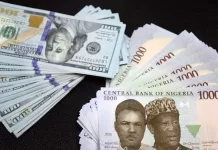The Central Bank of Nigeria (CBN) has explained that the major focus of redesigning the naira is stronger security features and timeliness as the country faces urgency to ward of counterfeits and save the economy from sinking.
The apex bank said it made the to redesign the nations currency with a view to saving the from sinking.

According to the CBN, 85% of banknotes are outside the banking system just as a huge number of the notes in circulation are counterfeits.
The Director of Currency Operations in the CBN, Ahmed Umar, insisted that the government did not repaint the banknotes but redesigned them to curb counterfeiting and other security challenges.
Speaking during this year’s workshop for finance correspondents in Nigeria, held in Port Harcourt, with the theme: boosting depositors’ confidence amidst emerging issues and challenges in the banking industry, Umar, stated that the main purpose for redesigning was to solve a problem, and we had limited time to solve that problem or we would sink. We don’t care about aesthetics.
Stating that the new denominations of notes are laced with security features to ward-off counterfeiters, Umar, who was represented by Amina Giwa, said: “We redesigned, not repainted the banknotes. In redesigning you can change color or reduce the size. The ink is a newer technology of security features.
“Only Nigeria Security does the printing. We print in Nigeria – Lagos and Abuja. We don’t print outside the country. We fly notes by air and other means to states, which has huge logistical implications.
“It is highly recommended that every five to eight years, you redesign your currency. It is done really to stay ahead of counterfeiters. In the United States for example, in 2007 the $100 note was issued and then redesigned in 2013. In the United Kingdom, the GBPS was first issued in 2011, and redesigned in 2016. In South Africa, the R20 was issued in 2009, and redesigned in 2016. In Canada, the $5 and $50 notes were issued in 2006/2004, and redesigned 2013/2012.

“However, in Nigeria, the N1,000 note has been in circulation for 17 years without redesign; N500 has been in circulation for 21 years without redesign; N200 has been in circulation for 22 years without redesign; and the N100 note has been in circulation for 8 years without redesign.
“It is important that the Nigerian public know that no new denominations are being introduced, no charges on deposits, and there is no limit on the amount that can be deposited.”






